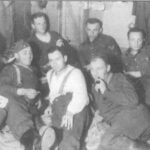Understanding military rank is crucial, especially for those new to the armed forces or interested in military culture. The stripes and bars adorning a military uniform are not merely decorative; they are potent symbols of rank, responsibility, and experience. While grasping the intricacies of every insignia can take time, a foundational understanding of Military Officer Dress Uniforms and their markings provides valuable insight into the hierarchical structure of the armed forces.
Key Military Rank Terminology
To navigate the world of military ranks effectively, it’s essential to familiarize yourself with some core vocabulary:
- Rank: Rank represents an individual’s position within the military’s hierarchical structure. It dictates authority, responsibility, and precedence within the armed forces.
- Insignia: Insignia are the emblems worn on military uniforms to denote rank, specialty, or designation. These can take various forms, including chevrons, bars, oak leaves, and stars, strategically placed on the shoulders, collars, or sleeves of uniforms. For officers, the insignia on their dress uniforms are particularly significant in formal settings.
- Pay Grade: The pay grade is a standardized system across all military branches that determines a service member’s base pay. While different branches may use different rank titles, individuals of the same pay grade receive equivalent compensation. Officer pay grades are designated with the letter “O” followed by a number (e.g., O-1 is the first officer pay grade).
Officer Rank Insignia: A Visual Guide
Military officers, holding positions of leadership and command, are distinguished by specific insignia on their dress uniforms. Here’s a breakdown of common officer insignia:
-
Bars: Bars are primarily worn by junior officers. Specifically:
- Second Lieutenant/Ensign (O-1): A single gold bar.
- First Lieutenant/Lieutenant Junior Grade (O-2): A single silver bar.
- Captain/Lieutenant (O-3): Two silver bars (worn side-by-side).
- Warrant Officers (W-1 to W-5): Warrant officers wear unique striped bars, differentiating them from commissioned officers. The specific design varies depending on the warrant officer rank.
-
Oak Leaves: Oak leaves denote field-grade officers, signifying increasing levels of responsibility and experience:
- Major/Lieutenant Commander (O-4): A gold oak leaf.
- Lieutenant Colonel/Commander (O-5): A silver oak leaf.
-
Eagles: The eagle insignia is reserved for senior field-grade officers:
- Colonel/Captain (O-6): A silver eagle.
-
Stars: Stars are the insignia of general and flag officers, the highest ranks in the military:
- Brigadier General/Rear Admiral (Lower Half) (O-7): One star.
- Major General/Rear Admiral (Upper Half) (O-8): Two stars.
- Lieutenant General/Vice Admiral (O-9): Three stars.
- General/Admiral (O-10): Four stars.
For a comprehensive visual guide to officer and enlisted insignia across all branches, the Department of Defense provides an invaluable resource: Defense Department’s display of officer and enlisted insignia.
Categories within Officer Ranks
Officer ranks fall into a hierarchical structure, reflecting increasing levels of leadership and strategic responsibility:
- Company Grade Officers: These are junior officers, typically Lieutenants and Captains (O-1 to O-3). They are primarily focused on leading platoons, companies, or similar-sized units and are directly involved in tactical operations.
- Field Grade Officers: Majors, Lieutenant Colonels, and Colonels (O-4 to O-6) constitute field grade officers. They command battalions, brigades, or regiments and are involved in operational planning and larger-scale unit management.
- General/Flag Officers: These are the highest-ranking officers (O-7 to O-10), holding titles like Brigadier General up to General. They are strategic leaders responsible for commanding major commands, services, or even branches of the military, focusing on policy, strategy, and high-level decision-making.
Addressing Military Officers Respectfully
Knowing how to properly address officers is a sign of respect and military etiquette. Here’s a guide to addressing commissioned officers:
- Army, Marine Corps, and Air Force: Use their rank (General, Colonel, Captain, Lieutenant) followed by their last name. For example, “General Smith,” “Colonel Jones,” “Captain Davis,” or “Lieutenant Williams.”
- Navy: Similarly, use their rank (Admiral, Captain, Commander, Lieutenant) and last name. For instance, “Admiral Brown,” “Captain Miller,” “Commander Wilson,” or “Lieutenant Garcia.”
- Warrant Officers: Address them as “Warrant Officer” and their last name, or use “Mr.” or “Ms.” followed by their last name.
Understanding military officer dress uniforms and rank insignia is more than just recognizing symbols. It’s about understanding the structure, leadership, and traditions of the armed forces. By learning to decode these visual cues, we gain a deeper appreciation for the dedication and hierarchy within the military community.

